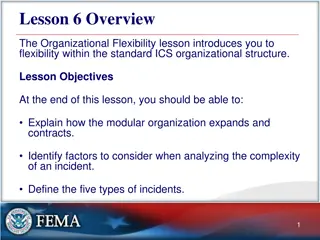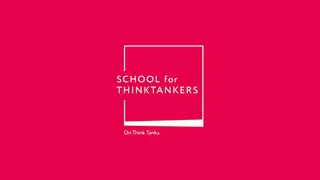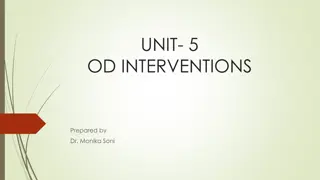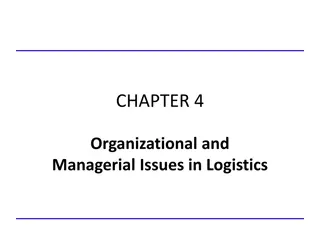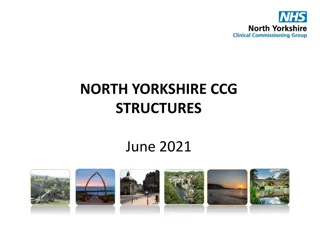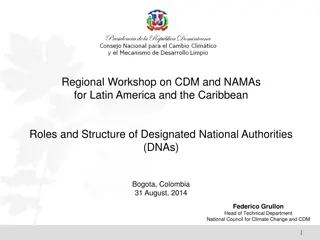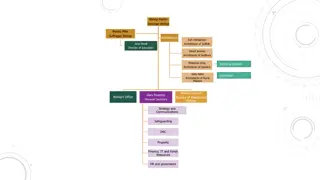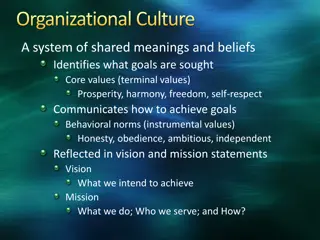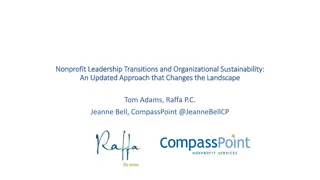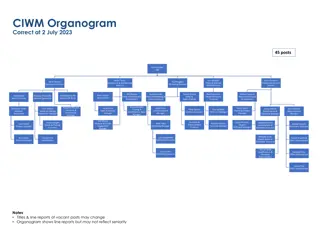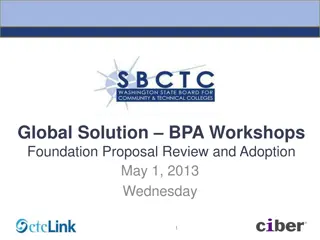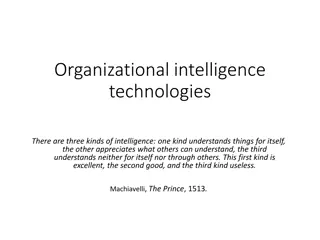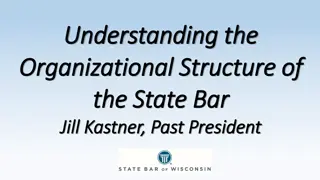
Different Aspects of Organizational Structure and Behavior
Explore the world of organizational psychology, organizational behavior, different levels within organizations, organizational structure, departmentalization, and how they impact work environments. Learn about the science of human behavior in organizational settings and the diverse components that influence organizational dynamics.
Download Presentation

Please find below an Image/Link to download the presentation.
The content on the website is provided AS IS for your information and personal use only. It may not be sold, licensed, or shared on other websites without obtaining consent from the author. If you encounter any issues during the download, it is possible that the publisher has removed the file from their server.
You are allowed to download the files provided on this website for personal or commercial use, subject to the condition that they are used lawfully. All files are the property of their respective owners.
The content on the website is provided AS IS for your information and personal use only. It may not be sold, licensed, or shared on other websites without obtaining consent from the author.
E N D
Presentation Transcript
ORGANIZATIONAL PSYCHOLOGY Organizational Industrial psychology, Work and Organizational psychology, is an within psychology. O psychology is the science of human behavior relating to work and applies psychological theories and principles to organizations and individuals in their places of work as well as the individual's work-life more generally. psychology, also known as applied discipline
ORGANIZATIONAL BEHAVIOR ORGANIZATIONAL BEHAVIOR Organizational behavior Organizational behavior (OB behavior behavior is "the study of human behavior in organizational settings, the interface between human behavior and the organization, and the organization itself". OB research can be categorized in at least three ways, including the study of (a) individuals in organizations (b) work groups and (c) how organizations behave OB) or organizational organizational
DIFFERENT LEVELS Individual Individual Level Job Motivation Employee socialization Group Group Level Level Leadership, Team, Communication Organisational Organisational Level Level Organisational Structure Job Analysis Organisational Culture Climate Organisational safety Organisational Organisational Creativity Organisational Innovation Power and politics within the organization Conflict management and negotiation Organizational change and development Level Satisfaction, Employee
Organizational Structure It is the framework within which an organization organizes its line of authorities and communicates and allocates rights and duties It is an abstract concept which can be represented in the form of a diagram known as ORGANOGRAM ORGANOGRAM
DEPARTMENTALIZATION Functional Departmentalization Product Departmentalization Process Departmentalization Geographical Departmentalization Customer Departmentalization
SIX KEY ELEMENTS OF ORGANIZATIONAL STRUCTURE Work Specialization Departmentalization Chain of Command Span of Control Centralization and Decentralization Formalization
ORGANIZATIONAL DESIGN Organizational design is the process by which managers assess the tasks, functions and goals of the business, allowing them to make decisions about how to group people together to best and most efficiently achieve their objectives. Types of Organizational Designs: Organizational designs fall into two categories, traditional and contemporary. Traditional designs include simple structure, functional structure, and divisional structure. Contemporary designs would include team structure, matrix structure, project structure, boundaryless organization, and the learning organization.
ORGANIZATIONAL DESIGN I. Traditional Designs I. Traditional Designs II. Contemporary Designs II. Contemporary Designs
ORGANIZATIONAL DESIGN 1. Simple Structure 1. Simple Structure 2. Functional structure 2. Functional structure 3. Divisional structure 3. Divisional structure 4. Matrix structure 4. Matrix structure ***************************************** ***************************************** 1. 1. Team Team- -based structure based structure 2. 2. Network org structure Network org structure 3. Project Structure 3. Project Structure 4. Boundary 4. Boundary- -less Organization less Organization 5. 5. Learning Organization Learning Organization 6. 6. Virtual Structure Virtual Structure



